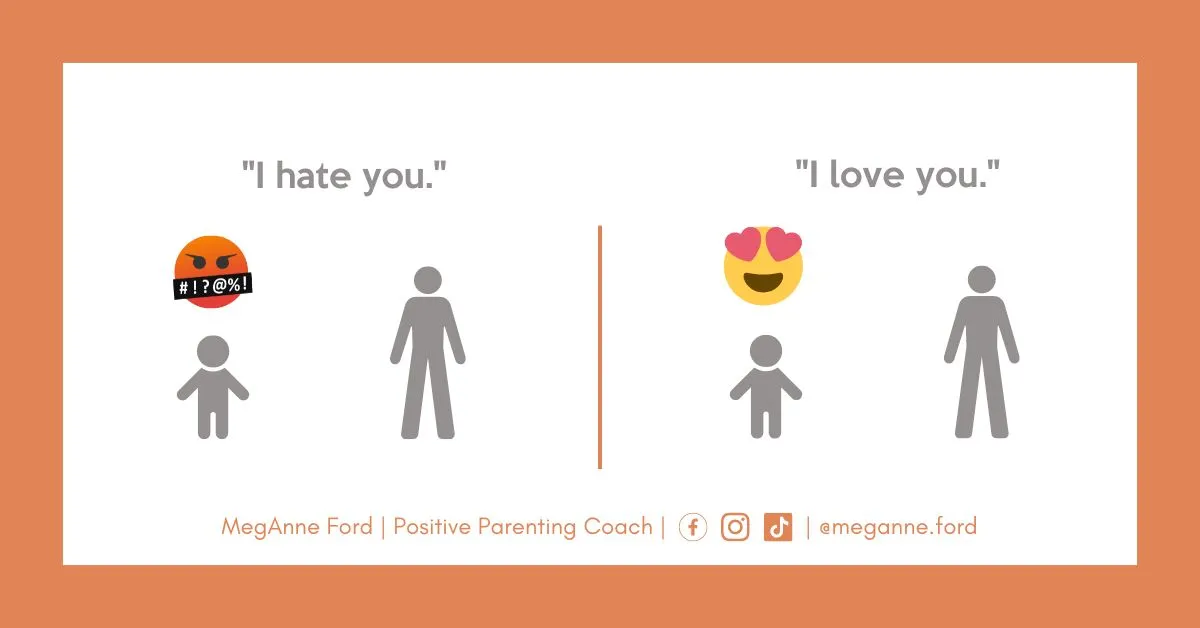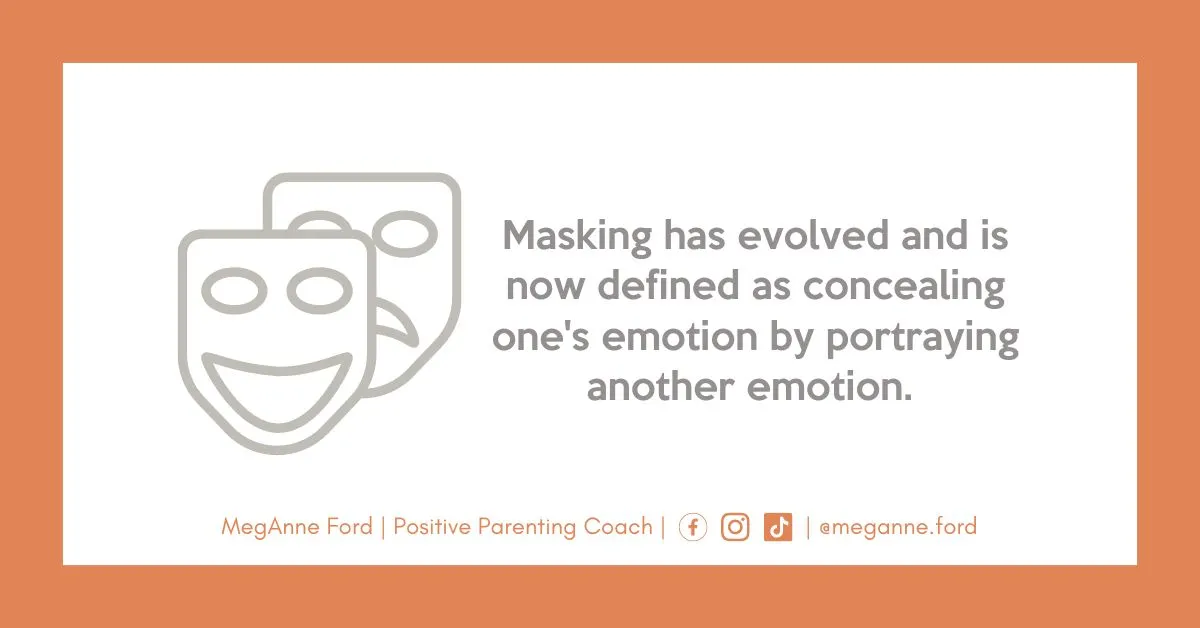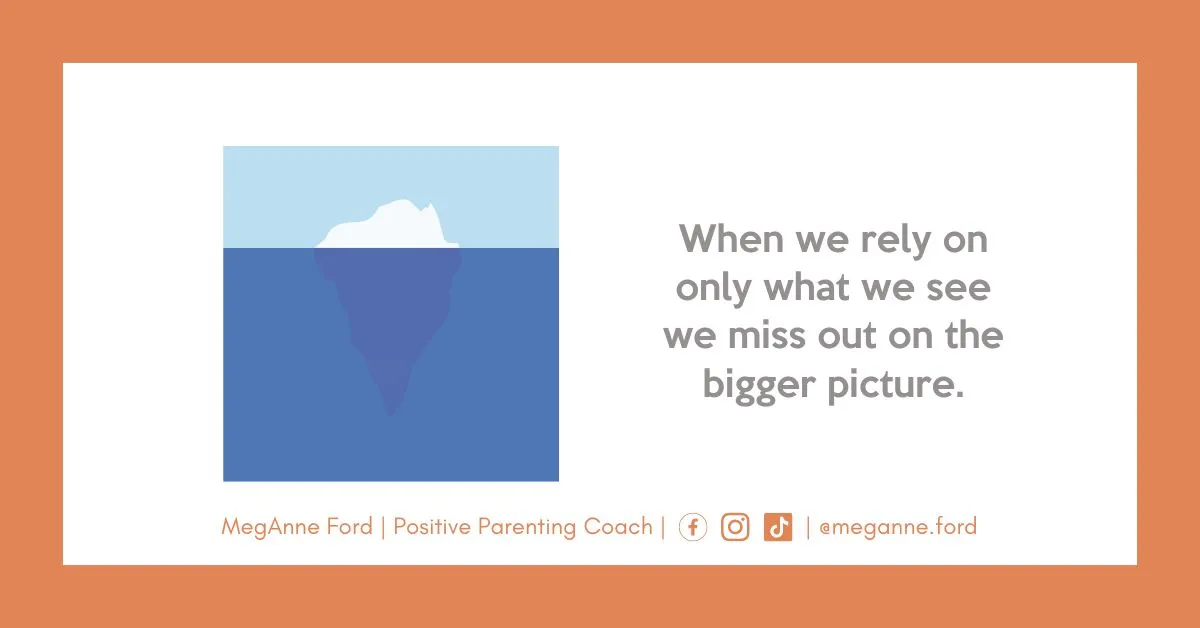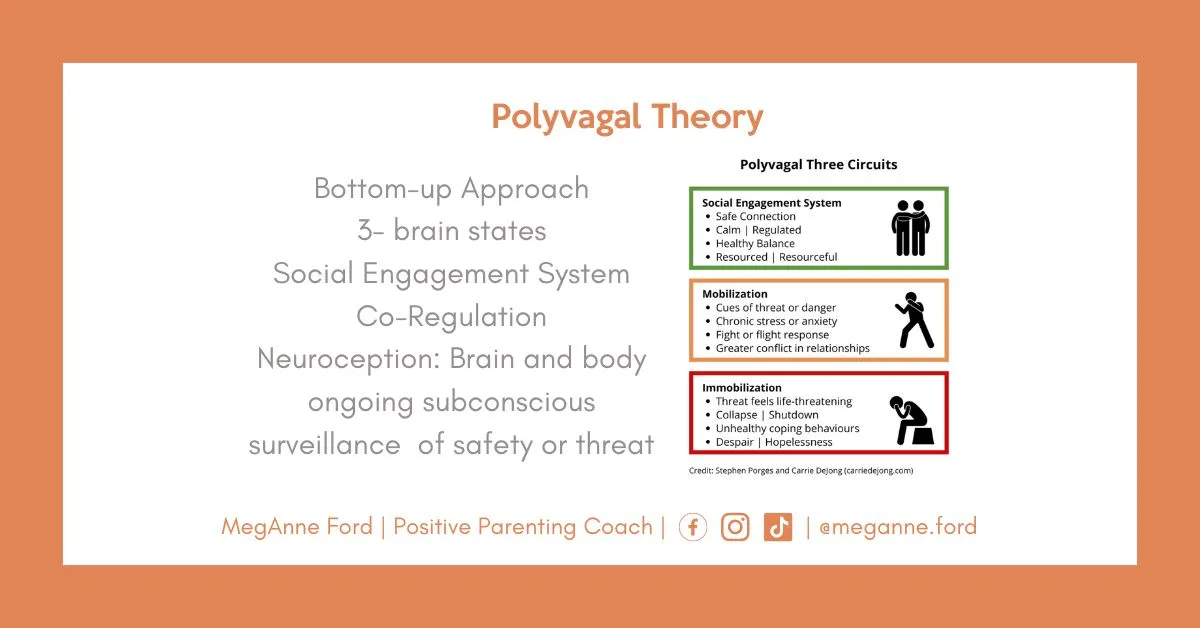
What your child's behavior is communicating.
How do you interpret your child's behavior? Let's explore the concept of interpreting your child's behavior as a form of communication. By shifting our perspective and understanding the underlying messages behind their actions, we can develop healthier ways of supporting and connecting with our children. We will discuss the importance of recognizing unmet emotional needs, managing triggers, implementing positive parenting strategies, and creating a trigger-aware environment. Let's dive in!
KEY TAKEAWAYS
Behavior as Communication: Recognize that your child's behavior is a form of communication. By shifting your perspective, you can uncover the underlying messages they are trying to convey.
Unmet Emotional Needs: Understand that challenging behavior may stem from unmet emotional needs. Identify these needs and work towards fulfilling them to promote healthier ways of seeking connection and support.
Managing Triggers: Be aware of internal and external triggers that influence behavior. Create a trigger-aware environment and develop strategies to minimize triggers, fostering a more conducive setting for your child's emotional well-being.
Positive Parenting and Support: Utilize positive reinforcement, set clear boundaries and expectations, and implement consistent consequences that teach rather than punish.
Interpreting Behaviors: A Paradigm Shift Game:
To further understand how to interpret behaviors, let's play a game. I will present three scenarios, and you can ask yourself three questions for each scenario:
I want you to focus on the interpretation of what is described.
Interpretation (/ɪnˌtəːprɪˈteɪʃn/) noun the action of explaining the meaning of something.
- Someone yawns, stretches, and rubs their eyes, and it is morning time.
- What would you do?
- What do you think they're going to do?
- What are your thoughts?
Interpretation: In the morning, these behaviors indicate that the person is just waking up. But how would you interpret the same scenario in the evening? The context of the behavior matters, and in the evening, you might assume the person is tired from a long workday.
- Someone is crying, their hands are in fists, they are stomping, and they're at a store.
- What might these behaviors mean?
- How would you interpret the same behaviors in a different scenario, such as a school setting?
Interpretation: In a store, these behaviors might indicate that a child didn't get something they wanted or heard a boundary. However, in a school setting, the same behaviors could suggest an altercation with another person, stress about a test or project, or difficulties with peers or teachers.
- Someone is smiling, hugging, and laughing, and they're at a party.
- What does this behavior convey?
Interpretation: This behavior signifies happiness, enjoyment, and having fun at a party. However, if someone is crying, sitting alone, or has an empty plate at the same party, we might assume they're experiencing something different.
This game allows us to realize the person's behavior was giving you information, and you were taking that information and trying to make assumptions and interpretations, which will guide how you show up with that individual.
As we show up with that individual, we can show up helpful or unhelpful.
With a person crying at a party, we might add support, saying, "Hey, are you okay? What's going on? Do you need something to eat? Is everything all right? Are you hurt?" That might just be what the person needs at the moment.
Now, let's think of those moments when you meet a child crying and how we show up. Are we there to support them, allowing them to de-escalate, or are we being a stressor and escalating the child's behavior?
Shifting Perspective: What Guides Our Interpretation?
When confronted with a child with challenging behavior, we commonly hear, "How can I change or stop them from hitting/ do their homework/ get off the game/ come inside/ listen to me."
This focuses on how to get them to do the thing.
Instead, I am inviting you to start thinking about what behavior is telling you and how you can show up in ways to support and de-escalate the behavior.
TRUTH BOMB: Challenging behavior is communication, and it's communicating something about them and not you.

"I HATE YOU" is a hard phrase to hear. No one likes hearing this. I can imagine you were struggling when you screamed something similar at someone.
It can be hurtful and confusing when children express their feelings this way.
We start to think, "Oh my gosh, I love you so much. Am I not doing enough? What is wrong? What do I need to fix."
If we shift this thought from, what do I need to do differently? - to - They are upset, they're mad has nothing to do with me and has everything to do with their experience, we can detach ourselves from the emotional coaster.
On the flip side, when someone says, "I love you, thank you so much, you're the best," it has little to do with us and often has to do with them and their experience.
If you are reading this blog, I can imagine you have sat on the couch after a long day with your child feeling tired and a little whip-lashed at how many I hate you moments turned into I love you moments.
We can start to depersonalize other people's behavior. Then, when we don't take it personally, we can begin to pivot to knowing that the child's behavior is communicating their experience.
As discussed in the blog "How do children learn listening skills?" We do our P.A.R.T. by using presence, attunement, resonance, and listening to our child, which results in safety and trust in our relationships.
Unpacking Ineffective Tools and Approaches:
We've been passed down a lot of tools, strategies, and theories that were rooted in old-school methods and outdated approaches that focus on manipulating behavior.
I'm talking about punishments, spankings, timeouts, sticker charts, and any strategy to get someone's behavior to change from an external approach.
When we take all the glitter off these strategies, the systems at play are the adults asking the child to change so that the adult is comfortable.
"I need you to be quieter; I need you to change how you talk to me; I need you to do your homework; I need you to show up and be different."
All of those practices are rooted in behavioral behaviorism. Sticker charts, timeouts, spankings, and treats are extrinsic motivators trying to get the child to comply.
Asking the question: how do I get them to do the thing?
If we change the context and use these strategies in an adult-adult relationship, we will see it as toxic.
If my husband came home one day and said I have a sticker chart for you, and you can have your specialty coffee if you get five stickers by the end of the week. My defenses would go up super quickly, and I start feeling unsafe.
These strategies in the adult world look like stonewalling, silent treatment, and, you could argue, jail. We have been conditioned to isolate ourselves in times of stress and struggle.
I am still unpacking these practices as an adult.
The Impact of Environment and Emotional Masking
The godfathers of behavioralism were psychologists Jb Watkins and B.F. Skinner, they start to shift into thinking about the relationship between behavior and environments.
Their hypothesis was if they were given a group of infants, those infants' environments would ultimately determine how they acted. They didn't focus on the parents, genetics, culture, or upbringing. They just manipulated the environment. Their Theory was based on a system of stimulus and responses, what is triggering and then what happens afterward, and it's focused on repetition, A + B = C. This is like being the carpenter parent we explored in Where Can I Find the Parenting Manual?
We are reminded of Pavlov's Dog experiment, which was a catalyst in understanding behavioral behaviorism and conditioning. In the experiment, Pavlov took his dogs and noticed that nothing happened at first when the dog was around a bell. He could ring the bell, and the dog didn't even pay attention, but when the dog was around food, he observed that the dog started to drool. So then he paired the food with the bell. He would ring the bell and give the dog food, and the dog would drool. Then suddenly, the dog started to become conditioned that it would activate the drooling when they heard the bell. This process is what's translated into many of our methods of managing behavior.
Sticker charts and punishments come to mind, the extrinsic drive. It invites us to reach for those band-aids and scripts.
Please give me the scripts!
We see parenting advice on social media giving the perfect words to say to children when they are not doing the 'thing.' These are called scripts. Unfortunately, scripts do not work in real life. There is no director calling cut to start the scene over again. Usually, the scene continues and ends with one or two people feeling deflated.
I was visiting a home with a toddler, and I helped the toddler go down for a nap. When I came downstairs, the parents said, "What did you say to her to get her to nap?" They were asking for the script. A + B = C, If I say this when I want it, they will do it. But, one size does not fit all, and every person has their own experience.
What I did for the toddler was help her find the grey in the black-and-white world. I connected and listened to her experience. I met her where she was and helped her to get to where she knew she needed to go.
The next time will be completed differently because her experience has changed.
The Reality of Child's Behavior & Charts
A child's behavior chart dehumanizes the person. We've now stripped away their experiences. We stripped away their wants, needs, desires, and autonomy.
I have experienced behavior charts as a teacher and a student. The red, yellow, and green, where you move a marker for each child. They start to learn quickly who the good and bad kids are, publicly on display. It invites the child and teacher to stick to the formula and create this fantasy world in that every situation is the same, and everything would be perfect if everyone followed the rules and was 'normal.'
We reach for those fantasies. We reach for those band-aids and say, "This is so hard." It is hard when we put black-and-white expectations on ourselves and the environment.
The grey is the connection, listening, and building the relationship, which is difficult because it requires us to slow down and actively listen and get into the gardener mindset.
In relationships, sometimes A + B = D or A + B = F. We will not know unless we slow down, listen and connect.
What is hard is unpracticed.
I often ask my sports coach husband how fast I need to run or how many miles is this going to take, and he reminds me this is a process, it's based on reps it's based on a lot of other factors outside of just coming and running on the treadmill, it is more dynamic. I have to practice releasing the A + B = C fantasy and surrendering to the process. Meet myself where I am.
Can we meet our children where they are?
Yes, with practice, we can start releasing the desire for compliance and the desire for this product-based outcome. Then, we can start investing in the relationship and building our skills to connect.
When we do that, we can alleviate the feelings of inadequacy that we might feel when we get advice from people that say, "Oh well, this is what I did, just do those three easy steps. This is what worked for me and my kid."
It is not one size fits all, which is why I am passionate about being a parenting coach. Just like sports coaching, I help you stay accountable to the process.
What is Emotional and Social Masking?

Social and Emotional Masking is a term that was first coined by Paul Ekman. He conducted a study in terms of disgust and embarrassment. He started to see that people would quickly wear masks and hide what was happening. Since then, Masking has evolved, and it's now defined as:
"Concealing one's emotions by portraying another emotion."
Most commonly, hiding a negative emotion or what we perceive as negative to put on a positive emotion.
We can link this to adults asking children to change so that the adult is comfortable.
When we try to change the child's behavior, we do not get to the route of the problem. This is where we can visualize an iceberg.

An iceberg has only very little of its mass above the water. The bulk is underwater, invisible. When we focus only on the portion above water or the child's behavior, we are limited to using the tools of behavioralism, scripts, behavior charts, stickers, threats, and punishments, which leads to the child masking.
We miss out on that more significant bulk under the water's surface, the unconscious mind.
Being comfortable with the uncomfortable.
Life would be easy if everything were happy, pleasant, and comfortable. But, unfortunately, we all know this is not life.
It is unfruitful to hope every moment, decision, and boundary will make your child happy. When we think that, it creates a tiny comfort bubble that will continue to be under threat.
So, what happens if we release the top of the iceberg? How do we manage?
Masking was thought of as a learned behavior, and developmental studies have begun to show that this ability to mask starts as early as preschool and improves with age.
Pamela Cole conducted a study where she looked at the control of facial expressions when people were put into scenarios that elicited these undesirable or uncomfortable feelings and how quickly they started to mask.
When you think about any time you've asked your child, "How was school" and they're like, "Well, it was fine." Think of how often you are asked on the street, "Hey, how are you doing," and you're like, "I'm good."
I watched a documentary years ago, "The Mask You Live In." It's a deep dive, unpacking toxic masculinity, specifically through the lens of American boys and how we put them into this system that invites and teaches them to mask.
Knowing this, we can start to pivot into understanding what's going on below the iceberg. We can figure out what's supporting the child's behavior and why that behavior is happening, and we can start to say that behavior is the outcome.
Take the example of squirming, which is a typical classroom occurrence. If we look at squirming through the behavioralism lens, we will say that the goal is to get the child to stop squirming. So how do we get them to stop doing that thing that's annoying to us?
We start nagging.
We start punishing.
We start bribing.
We start taking away things.
Instead, if we can start to lean more into the developmental lens, the goal when we see the squirming is to question why the child is squirming. What's going on there? Getting curious, not to fix and rescue.
We use connection. We may talk, go over, bend down, and evaluate the situation. What's going on around them? Maybe they need to go to the bathroom, maybe they're hungry or have excess energy.
We're going to get curious.
Start to ask questions and find out more information.
We're going to offer choices and give options.
That squirming is the product, it's what's coming up, and we're going to get curious as to what's fueling it.
Developmental Theories
There are many different kinds of developmental theories. I broke them down into three overarching types.
- Psychosocial Theory (Erikson)
Cognitive Theory (Piaget)
- Attachment Theory (Bowlby & Ainsworth)
- Social Learning Theory (Bandura)
Sociocultural Theory (Vygotsky)
The first type is the Psychosocial Theory of Eric Erickson which states there are eight stages of development based on social interactions and conflicts that arise at different age points. His Theory is that when you're growing together, you will face certain conflicts, and how those conflicts are resolved will start to guide how you show up.
Cognitive Theory, developed by Jean Piaget, has four stages of developmental growth based on thought processes and how we process information. Piaget was looking at how we take in information, make sense of the information, and grow from that information.
The second type is attachment theory, which was studied by John Bowlby and Mary Ainsworth. My work as a parenting coach is rooted in attachment theory, which looks at the quality of the relationship between the parent and child. Asking questions like, does the child feel safe? Does the child feel seen? Does the child feel secure? Does the child feel soothed? Is the relationship that is being built secure or insecure?
The third type is learning theories. Albert Bandura's Social Learning Theory says behaviors can be learned through observation and modeling. We start to see why modeling is such a powerful force. We can begin to harness our actions and what we do to become what we wish to strengthen and grow with the child in front of us.
Lev Vygotsky's Socio-Culture Theory looked at social and cultural influences and how that influence development.
When we take each of these different lenses, we can start to see that many pieces of the puzzle could come together to impact our child. There is power in looking below the surface at what is intrinsically motivating the child.
The Polyvagal Theory
The Polyvagal is influencing a lot of education spaces that I've been part of and affirms these processes.
A very high-level introduction to Steven Porges's Polyvagal theory looking at three circuits and a bottom-up approach. Meaning it asks, are we safe? Are we connected? What are we learning?
Three different brain states:
- Green zone: We are engaged in our social engagement system. We feel cool, calm, collected, and connected. Our behavior would look like this when the bottom of our iceberg is rooted and grounded. The outcome is a calm, regulated person. Having our air masks on first, so we can give them to others. They also can co-regulate with another person.
- Orange zone: This is the mobilization to stand on guard. So we see a tiger or a cat? What we talk about in "Why is parenting so Hard.". We have to assess if it is a tiger or a cat. Is there a threat or a danger? So we start to 'flip' our lid.
- Red Zone: When we are in a state of fawn, freeze, flight, or fight. We collapse, go into numbing, unhealthy coping behaviors and coping mechanisms, and thoughts of despair and hopelessness.
When we can understand where we are in this system and what our behavior is telling us, we can start to show up in ways that support ourselves and others.

What is your child's behavior telling you?
I hope you can now start to see that difficult behavior you are feeling or seeing from a child means that person is having a difficult time.
It is not that they are giving you a difficult time, it is not that they're being manipulative, they're not doing this on purpose, or trying to get away with something. These are the stories that have been taught to us from this lens of behavior. Us looking at behavior as either good or bad.
We can start getting curious: is there a missing skill or a need going unfilled?
We will continue to ground into the process of neurosuction and neuroseption, the sense and understanding that our brain and body are always taking information and survailing our safety.
This is a safe space for you to build your skills.
Learning is hard, learning takes making mistakes, and learning takes activation. Here you have found a safe place to help you meet your needs so that you can help your child.
To reflect on:
Let's say you are trying to convey an important message, and someone interrupts you asking for help:
How do you act? What is your behavior when your needs are met and you feel supported?
How do you act? When you feel stressed, your needs are unmet, and you feel unsupported?
Further reading about behaviors would also include looking into the Hand Model of the Brain by Dr. Daniel Siegel.
Understanding and interpreting your child's behavior is crucial for effective parenting. By recognizing behavior as a form of communication, addressing unmet emotional needs, managing triggers, and utilizing positive parenting strategies, we can foster healthier connections and support our children's emotional well-being. Embrace the complexity of behavior, shift your perspective, and invest in building strong relationships with your children. Together, we can create thriving family dynamics.





